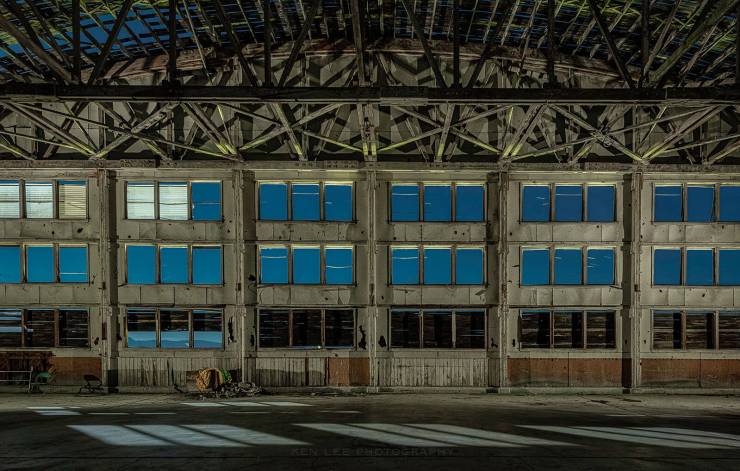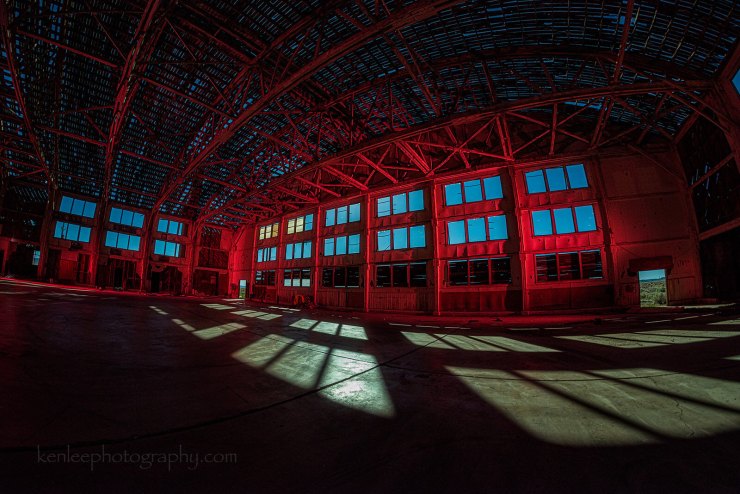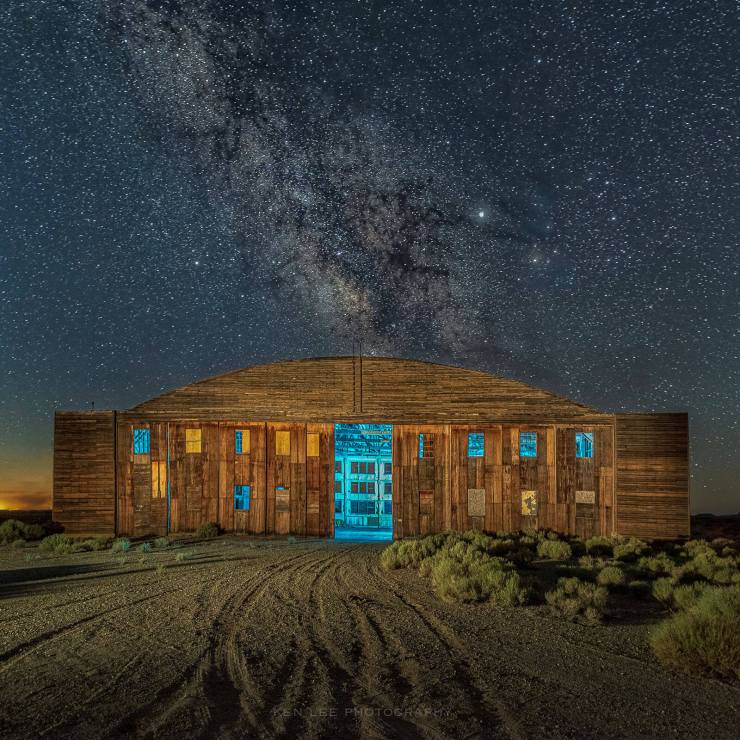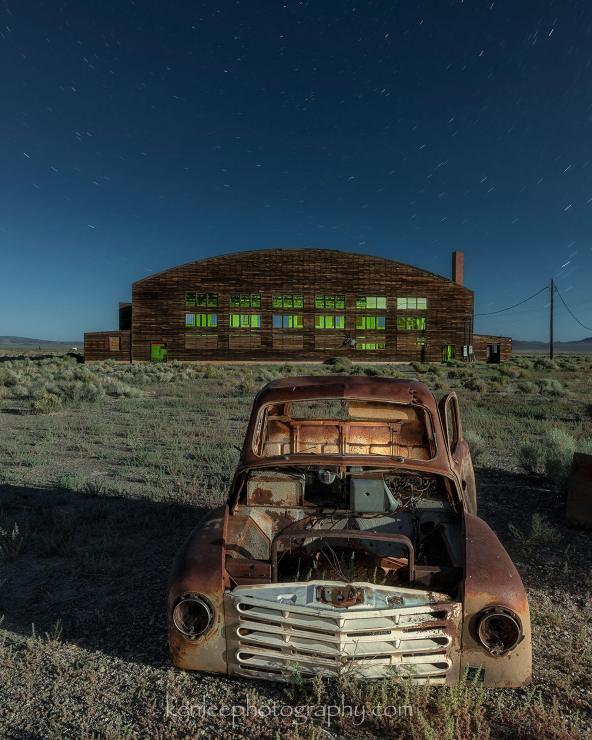After gazing upon this enormous historic abandoned wooden hangar, here’s how I decided to light all these fantastic geometric shapes to create depth and interest. It took a lot of running around!
Historic World War II hangar
Upon driving up to the abandoned wooden hangar, we were in awe. The structure inspired awe despite its decay. The hangar housed B-24 Liberator bombers, two of which crashed within an hour of each other, among other accidents. This led some to believe the airfield to be cursed.

However, this evening was definitely not cursed. We were able to get many photos. This particular photo, however, is a hidden photo I discovered while cleaning out the “digital attic,” so I thought I’d share it with you.
Four steps to light painting the wooden hangar
I felt that the geometric shapes, enormous overhead beams, and windows could create some interesting symmetry. I wanted my light painting to support that and define some of the edges to create interest. Here’s how I did it.
Step one: Creating contrast on the walls
I ran over to camera left. I stood close to the wall and skimmed a warm white light across the wall.
Step two: Balancing that contrast on the other side
After that, I ran over to the right side of the wall. I basically did the same thing but to the right. I don’t always do this. However, what I was trying to create were shadows converging toward the middle. I also wanted relatively even illumination. This accomplished that.
Step three: Rimming the windows
I thought it would be interesting to rim the upper part of the windows. I ran outside. I used the same warm white light to illuminate everything from far away so that it would create a glow around the top of the windows. This would create more interest and depth.
Step four: Illuminating the large beams
I wanted to create an interesting pattern with the shadows of the immense beams holding the ceiling up. I stepped as far back as I could while still being inside and swept the upper part of the ceiling. This also defined the wooden roof more, as this otherwise would have been completely in shadow as well.
Other approaches to photographing the hangar

I photographed this hangar using various other approaches. It was easily one of my favorite structures I’ve photographed, offering inspiration and many interesting lines.
Here are a few more photos from the same evening. You can see how illuminating them with light painting can create many different moods.
The hangar is still abandoned. However, it is no longer accessible to the public in an effort to preserve it from vandals. I feel blessed to have been able to photograph it when I did.

I used the above photo to try to describe what the Milky Way really looks like in person.

Tell your story with the second annual Visual Storytelling Conference!
Experience four days of interactive, online training sessions featuring a range of educational content with experienced photographers and content creators. This free event kicks off with a series of technical boot camps to build essential skills, followed by live, online sessions on photography, video, business and social media. Join live from March 10-13, 2022!
